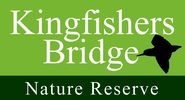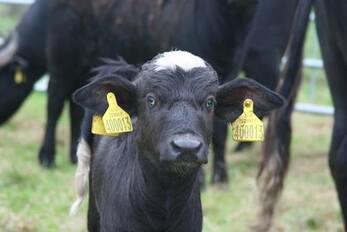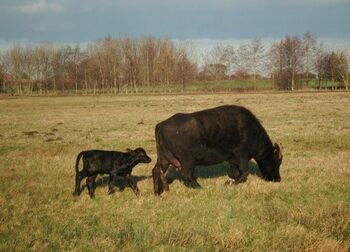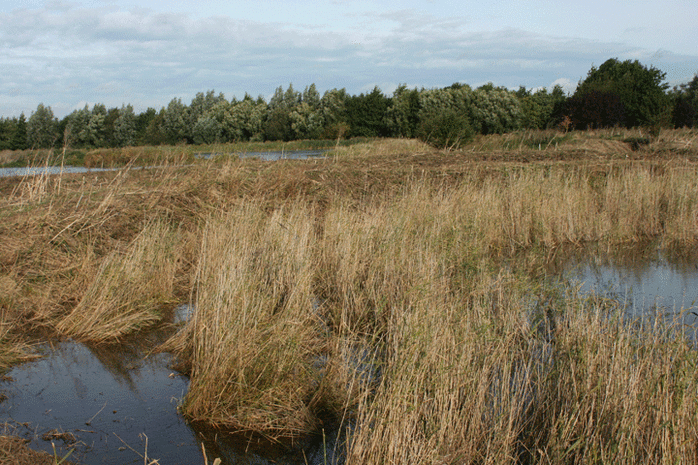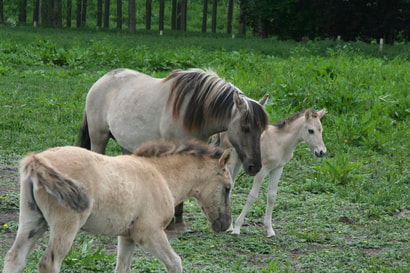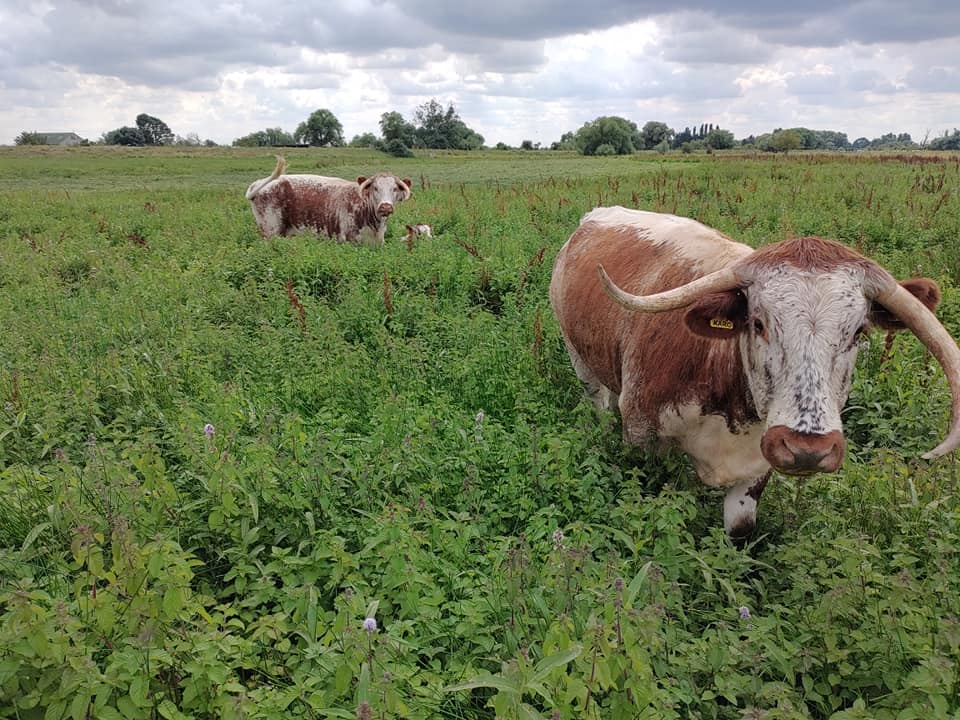The use of grazing animals at Kingfishers Bridge allows management of habitats that would otherwise require specialised machinery and many more man-hours. Without grazing the site would quickly turn to scrub and lose much of its wildlife interest.
Asian water buffalo
|
We have a small herd of water buffalo, originally from Nepal, on the project. The buffalo deliver an excellent range of grazing outcomes and are especially at home when grazing in the reed bed which is often too soft for machinery to access. They continuously graze new growth, whilst stripping existing reeds bare, and trample the litter layer which prevents the waterways from becoming choked. Their love of wallowing means that they will push deep into the reed bed and into the pools within, creating tracks though the reed to the pools. When water levels rise again these channels through the reed bed provide excellent feeding sites for Bittern. The reedbed is often too soft to get machinery into it until much later in the year.
|
|
Buffalo are incredibly hardy, remaining outside all year round; they are able to convert roughage much more efficiently than domestic cattle. Supplementary feeding is only needed in the harshest winters. Despite their imposing appearance our buffalo are good natured and very curious. You need to be careful to keep an eye on your tools when working in their grazing area! The aftermath of buffalo grazing in the reed beds demonstrates their ability to graze out all green vegetation in even the wettest areas of the whole site. |
Konik horses
|
These wetland specialists, originally from Poland, are perfectly suited for our grazing needs here at Kingfishers Bridge. They graze in much the same way as sheep, nipping rather than tearing at vegetation as cattle do. This enables them to close crop grass and rushes and has resulted in a varied sward very attractive to breeding waders. These small horses require very little human intervention, having very high natural resistance to parasites and inclement weather. Unlike many domestic horses, Koniks are much better able to control their own nutritional intake, often choosing browse and roughage over sweeter grasses, this is perfect for a grassland management situation where variety is required.
Longhorn cattleMost of the summer grazing at Kingfishers Bridge is done by Longhorn cattle. Whilst not as hardy as the Asian water buffalo, Longhorn cattle can cope very well in wet conditions and will graze much coarser grasses more effectively than continental cattle breeds. The Longhorns grazing at Kingfishers Bridge all belong to our tenant grazier, Jonny Fuller from Spinney Abbey Farm, allowing us to vary the numbers that we need each year. Whilst they may look imposing with their large horns, Longhorn cattle are very docile, even when they have calves.
|
